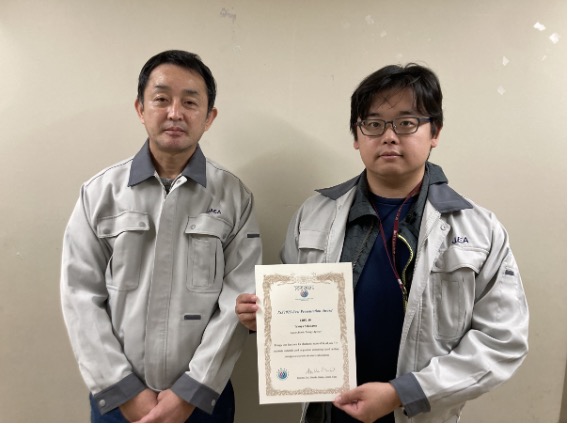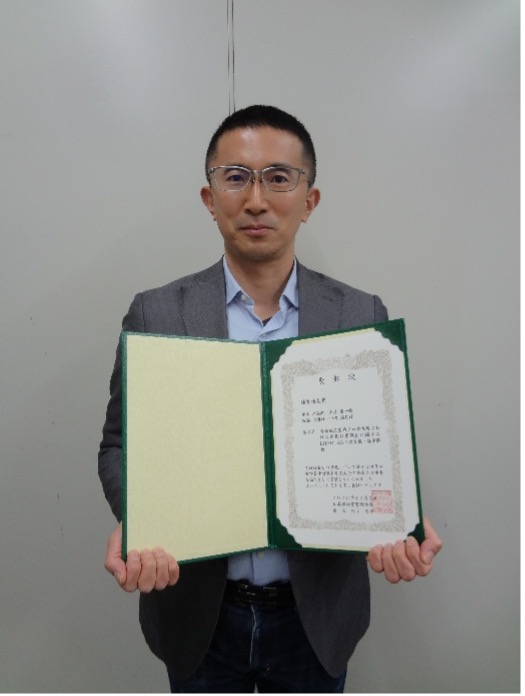

HOME > Awards
2026.01.09

Dr. Takuya Sekikawa of Research Group for Radiation Transport Analysis received Best Presentation Award in the Electronic Device category at International Symposium on Superconductivity 2025, ISS2025. The presentation title was “Energy loss functions for electronic mode of Si, Al, and TiN substrate materials used in quantum computing based on first-principles electronic structure calculations”.
The application of superconductivity for quantum computers has significantly increased its importance in recent years. At the cryogenic temperatures (10 mK to 5 K) where superconductivity is realized, it is known that environmental radiation contributes to the decay of the superconducting state. To understand this phenomenon, it is necessary to perform radiation transport calculations within superconducting materials under cryogenic conditions.
Therefore, we focused on the energy loss function under cryogenic conditions, which is fundamental data necessary for radiation transport calculations at cryogenic temperatures. The energy loss function is divided into two parts: the electronic mode, which contributes from the electronic system, and the lattice mode, which contributes from the vibration of atomic nuclei in the crystal. In this study, we first focused on the energy loss function of electronic mode. The mode determines radiation transport, and calculated energy loss functions at room temperature and cryogenic temperatures of Si, Al, and TiN, used in superconducting qubits. In the results, we confirmed that the energy loss function of the electronic mode does not vary with temperature.
In the future work, we plan to calculate energy loss function of lattice modes necessary for simulations converting the kinetic energy of ejected free electrons into thermal energy and perform radiation transport calculations in quantum computer materials. This research project is expected to contribute to the development of radiation-resistant technology for superconducting qubits.
2026.01.07

Dr. Hiromasa Nakayama, researcher of Research Group for Environmental Science, received the awarded paper at the 46th Annual Meeting of the INMM Japan Chapter. The awarded paper, “LHADDAS analysis on the area of influence of urban buildings on air dose rate distribution patterns against radiation terrorism in urban central districts” was published in the 46th Annual Meeting of the INMM Japan Chapter proceedings.
LHADDAS(Local-scale High-resolution Atmospheric Dispersion and Dose Assessment System)was conducted to analyze dose consequence of radiological agent attacks in urban central districts. The spatial distributions of the air dose rates were compared and investigated the spatial extent of the distribution patterns influenced by individual buildings by comparative analysis on the two typical cities. It was shown from the simulation results that the spatial extent of the influenced area could be about 1.0 km from a point source.
Our study can be helpful for pre-planning and practical training for responding to radioactive material dispersal attacks in urban environments.
【Awarded paper】The 46th Annual Meeting of the Institute of Nuclear Materials Management (INMM) Japan Chapter Proceedings